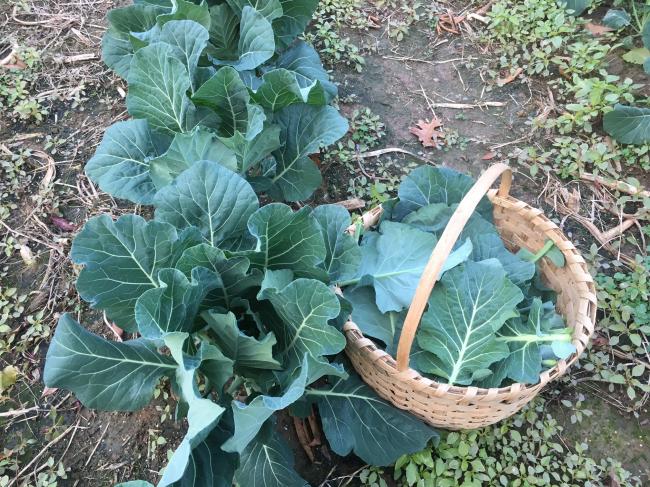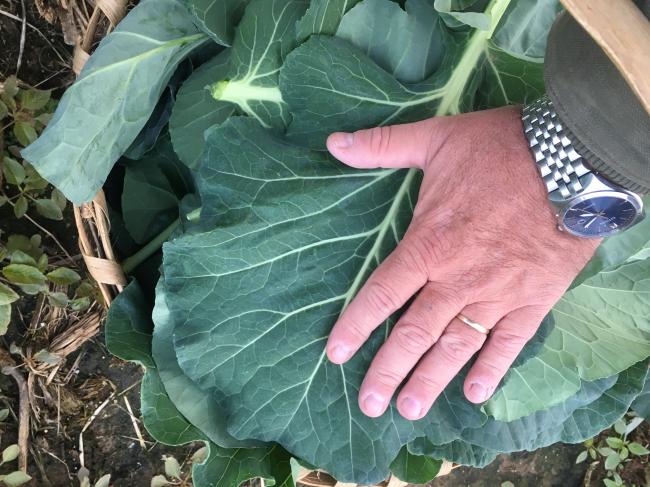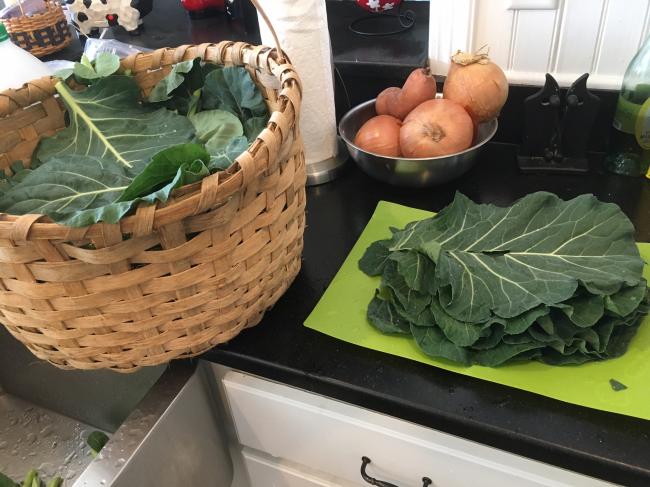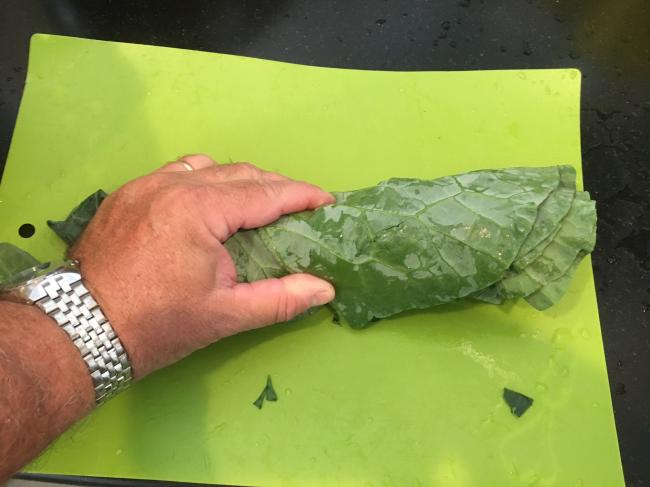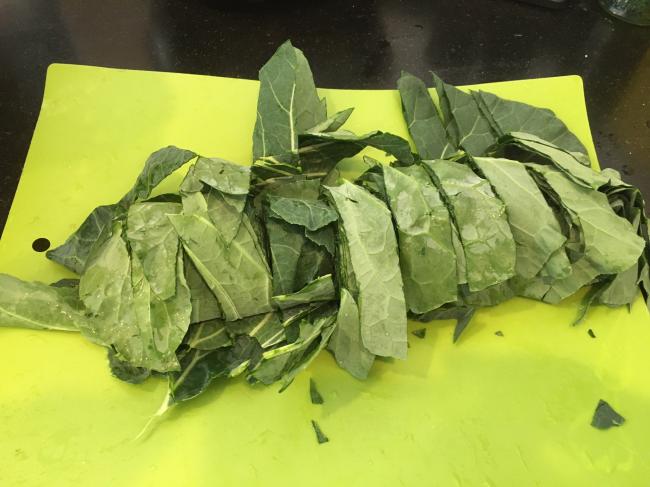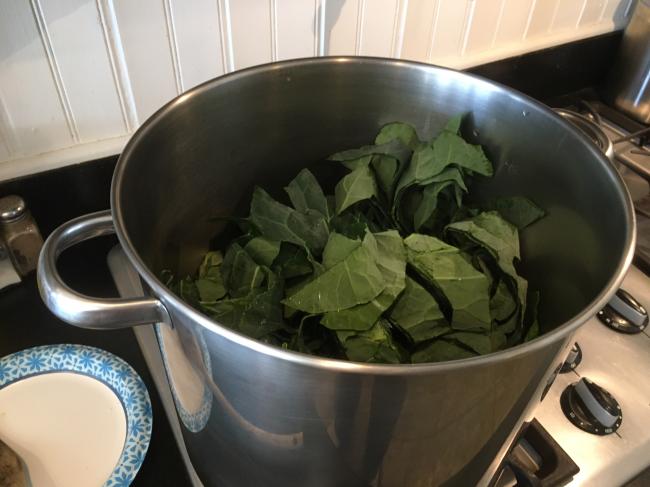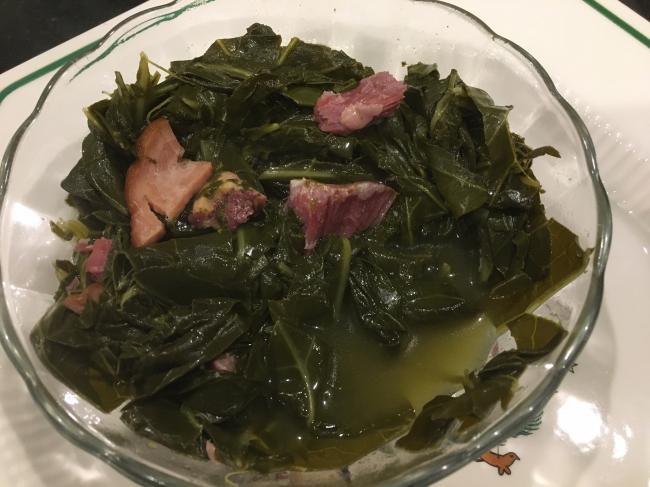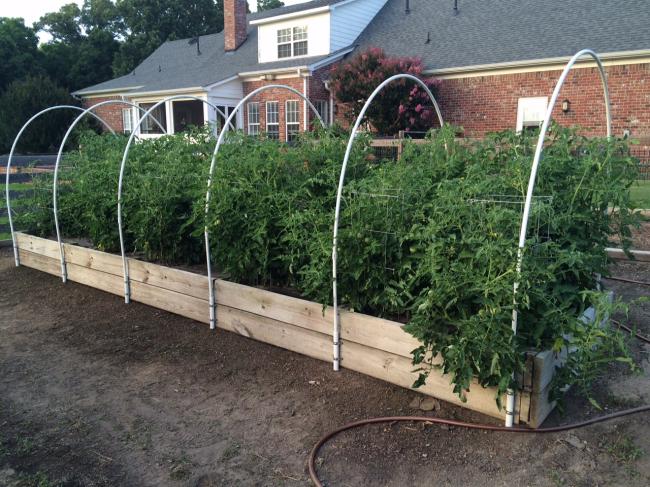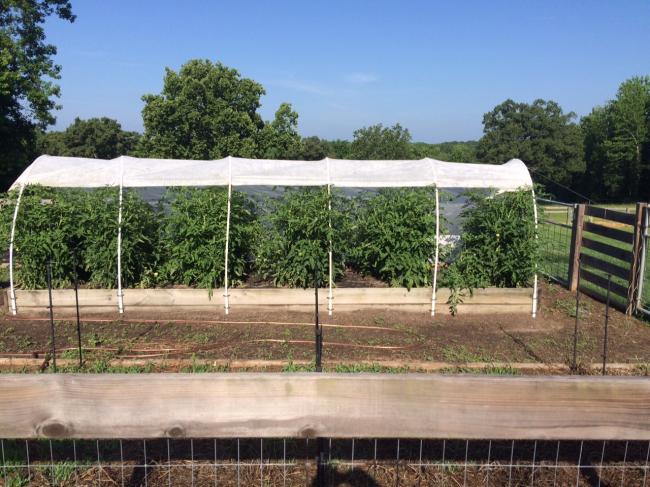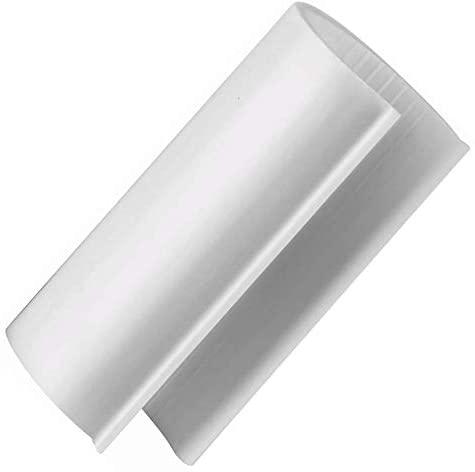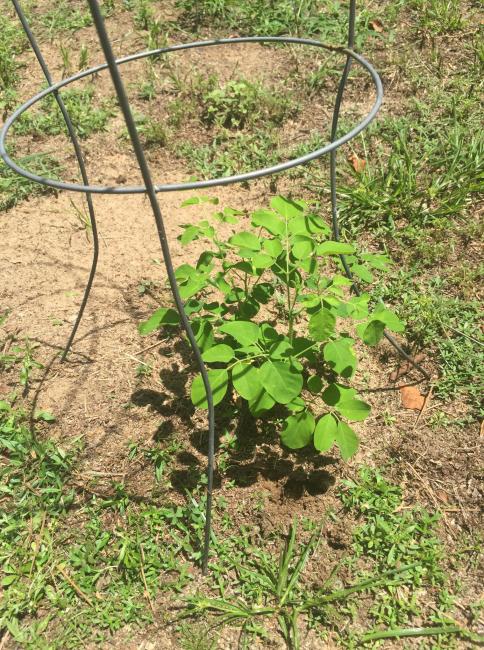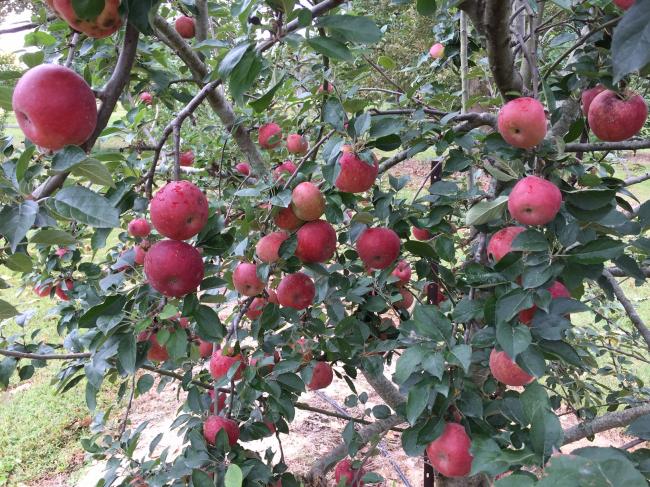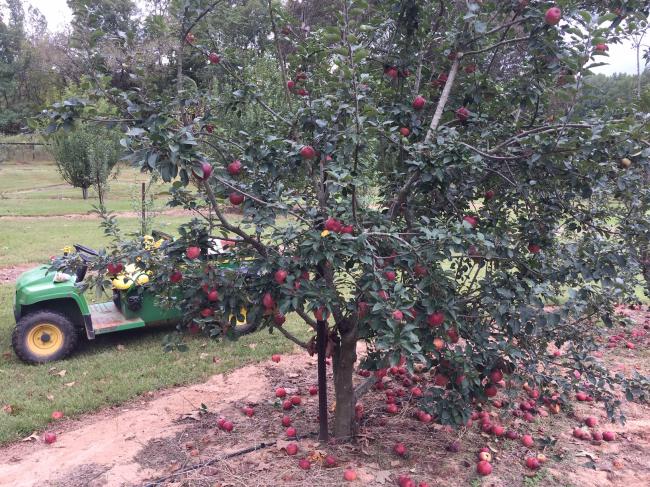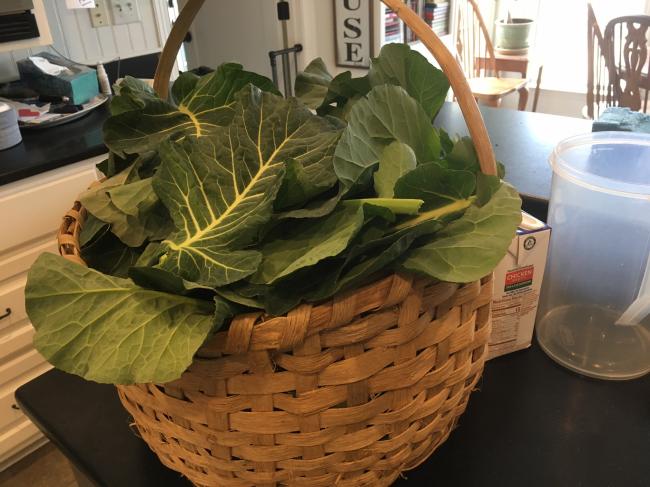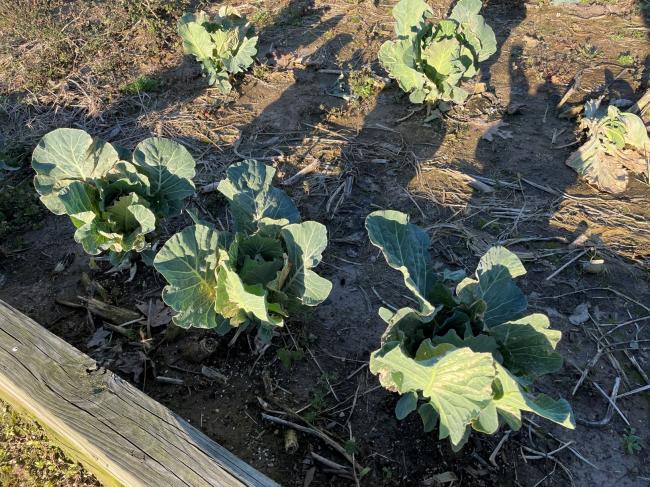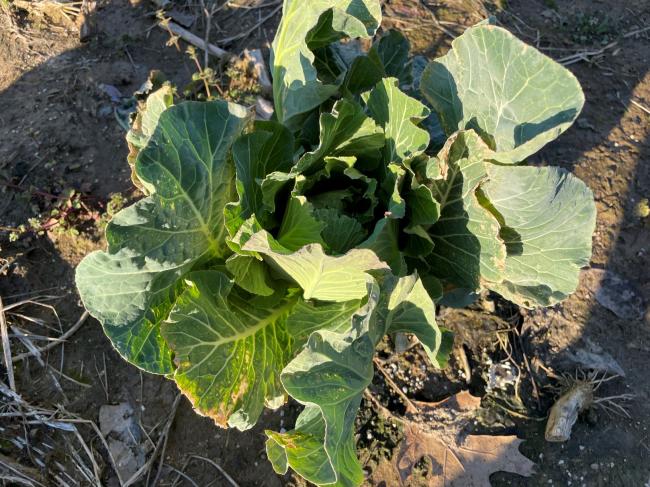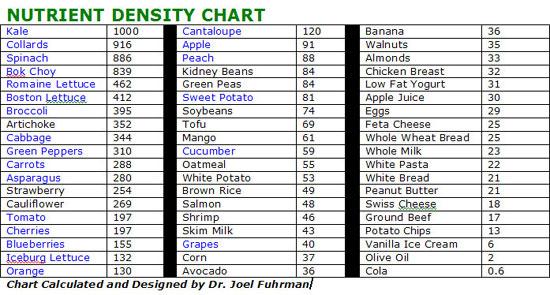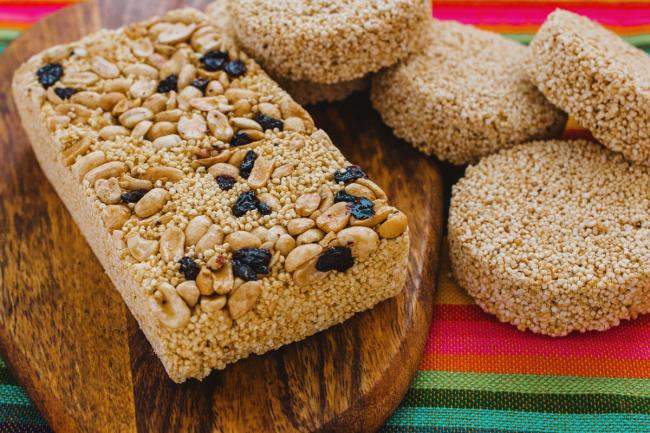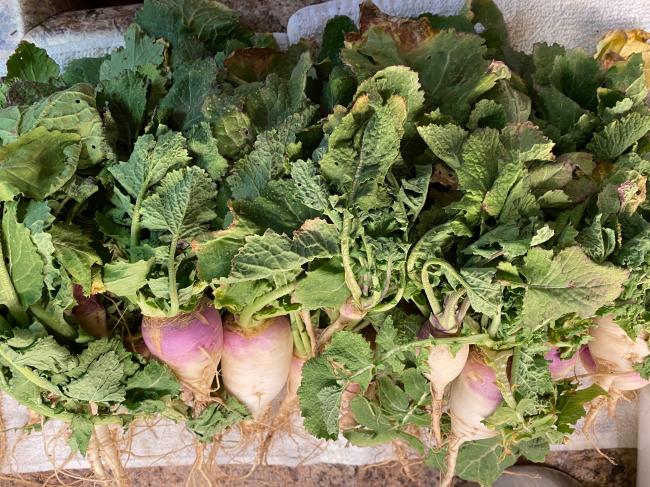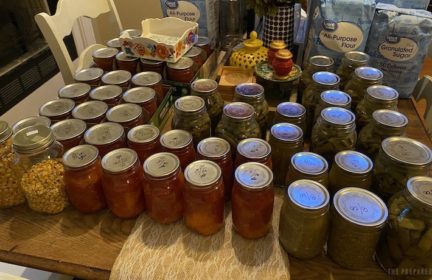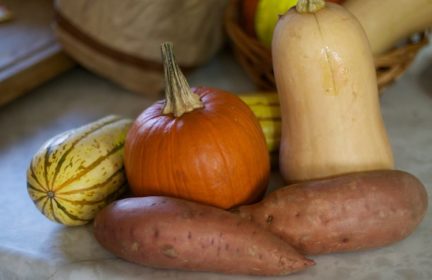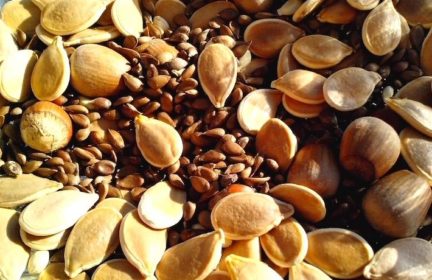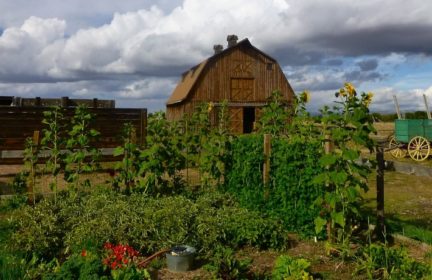Fall gardening – great food + great practice for survival gardens
I love to garden & especially love growing food in the fall. Seems like all the fall crops are just super nutritious and so easy to grow, such as kale, collards, turnip greens, broccoli, peas, etc. I find them easy due to the fall weather. You plant them early in the fall, when it is still a bit warm out. The seeds quickly germinate in the warm soil. Then as it cools, the cool loving plants thrive as the warm loving weeds, disease & insects go away. You can grow the same crops in the spring, but I find them harder to grow because the timing is opposite. In the spring, the seeds might struggle germinating in the cool soil and as the plant matures, it warms up and the weeds, disease & insects attack.
As a prepper, I think it vital to practice growing what might be essential during a severe crisis. In such a crisis, growing food during the ENTIRE growing season will be necessary… thus the need to produce nutritious food in the cool weather.
Curious what others here are currently growing? Right now I’m growing Tuscan (Lacinato) kale and collards. In the past have grown turnip greens, mustard greens, broccoli & snow peas. The most mature kale leaves are about a foot long & ready to be picked. Tonight will cook them like an Italian creamed spinach with parmesan cheese.
-
Best Replies
RedneckContributor Redneck - December 2, 2020
Picked a bunch of collards on Monday, and they are soooo good. We have had a few freezes and collards get sweeter after a freeze. My understanding is the leaves produce sugar as sort of an antifreeze. Since then the low on Tuesday morning was 22 and it was 23 this morning. Collards will kinda look all wilted, especially in the morning after a hard freeze, but will mostly recover by the afternoon. Most certainly within 2 days. My understanding is collards can handle single digit lows, so they make a great cool weather crop. In that regard, I like them better than my Tuscan kale, because they can handle colder temps. After a hard freeze, some of the kale leaves show damage… but not with collards. Also collards have a bit more nutrition than kale and the leaves are bigger, with much more leaf area compared to stem area. In other words, a basket of collards will give you more food than the same size basket of kale.
I’ll take each leaf and rinse it under running water and the pull out the stem. I then stack them on a cutting board, roll up & then cut into slices around a bit less than 1″ wide. Since the stem is removes, that makes most of the pieces around 3-4″ long.
I put them in a gumbo pot with low sodium chicken broth and ham hocks and simmer for at least 3 hours… until the hocks start to break down. I will add some sugar, apple cider vinegar and maybe some additional ham during the cooking.
-
Comments (48)
-
Gideon ParkerStaff - October 26, 2020
I’m jealous! I wish I could do a fall garden. Today we got about 6 inches of snow. Kind of hard to grow in that.
Thanks for teaching me about fall gardening though! That makes a lot of sense how some vegetables like germinating when the soil is warm, but then thrive when the soil cools down and weeds die off.
-
RedneckContributor - October 26, 2020
Surely you have a fall season? Maybe you just need to plant sooner than someone like me, in the south. Many cool weather plants will not get hurt by the occasional snow or freeze, especially if mature. Siberian kale can handle extemely low temps and I’ve had Austrian winter peas stay green all winter. I’ve picked broccoli with the plants covered in snow.
As a prepper, IMO you should now be experimenting with different plants and varieties, to determine which ones you can grow to extend your season. Having beans & rice in storage is great, but also having fresh food from the garden to go with it, is much beter.
-
Gideon ParkerStaff - October 26, 2020
Thanks for the ideas! Yes, I will probably have to start my fall garden alot sooner than most people because of the elevation I am at.
You sure are knowledgeable about gardening Redneck! Thank you for your continuing knowledge. I’m sure we will keep you busy on here early spring.
We should have a The Prepared Forum Garden growing contest, and people can share updates on their crops. Although, i’m pretty sure you would win.
-
RedneckContributor - October 26, 2020
Lots of trial & error… lots of errors. 🙂 But the way I see it, if we ever do have a crisis, that certainly won’t be the time for trial & error. During such a time, error could mean death or starvation.
I’m personally not interested in contests but do love to preach home gardening. I have a young guy, around 20, that helps me on Saturdays. He was part of our church youth group. Well helping around the farm, he has developed a love for fresh raised food & gardening. Just this past Saturday, I had trouble getting him to work as he was picking young Rattlesnake pole beans from the trellis and eating them raw. Then he headed over to the peppers & was munching on some of the yellow bell peppers. I have no doubt he will have a garden himself the rest of his life.
-
-
Josh CentersContributor - October 26, 2020
Right now I’m growing 30 heads of garlic and I have a bed each of turnips and cabbage. No idea how they’ll do, I might have planted a bit late, but the garlic is doing well. I’m going to be digging beds all fall and winter and seeing what I can get to grow, even if it’s just cover crops.
-
RedneckContributor - October 26, 2020
You growing the turnips for the bulb or the leaves? Some of the varieties that are best for leaves produce almost no bulb. I personally prefer collards for cool weather greens. The leaves get bigger and are much easier to clean. Also, collards keep their texture much better when cooked slowly for a few hours… southern style.
I’d suggest getting your cover crop in ASAP, if possible. I often plant Austrian winter peas in my beds. In my zone 7a, they will stay green all winter & in the spring, soon as it warms a bit, they will just explode with new growth & pea pods. The leaves of the Austrian peas are just delicious raw and to me, taste just like raw English peas. You can eat them all winter. And of course, being a legume, they will add nitrogen back into the soil. As it warms up in later spring, they will die off. I leave them on the ground as a green manure and just plant in amongst it.
Now once I have a bed in proper shape, I never till it again. Your soil is a living organism & it is important to not chop it all up. When I remove plants, I always cut them off at ground level. I want those roots to stay in the soil & slowly decay. As they decay, they will leave little tunnels all thru the soil & allow oxygen to move thru the soil, plus they will provide some extra nurishment for follow on plants. These follow on plants’ roots will follow the path of least resistance, and send their own roots down those paths.
-
Josh CentersContributor - October 26, 2020
I’m growing purple tops, so hopefully I’ll get some bulbs. I have collard seed, so that’s something else I’ll definitely put down.
-
Winston Smith - October 27, 2020
I agree. I’ve only recently discovered the no-till gardening method. From what I’ve read, it’s the way to go.
-
-
chicksnhens - October 27, 2020
I’m up here in chilly zone 4/5 and I’ve definitely fallen into the “summer only” garden trap. Most people here only do gardens late May-Oct 1 because our fall growing season is so brief. BUT you can definitely extend it (Late April-early Nov) if you choose cold weather crops and use things like cheap hoop houses/cold frames to protect them. It takes more work and how long you can extend the season varies year to year based on weather conditions, but it is very possible.
Sprouting microgreens indoors is also another really easy option for people in apartments or during the winter months! All you need is the seed quilt, a pan of water, and a window.
-
RedneckContributor - October 27, 2020
That is why I preach now is the time to find the varieties that can handle your temps for spring & fall crops. And like you say, you can rather cheaply build some cold frames to extend the season even more. I have a huge roll of cloth for when I cover my crops. That roll is like 12′ tall but it holds the temp in & allows sunlight thru. I just bend sections of pvc pipe as the frame & attach the cloth to the ground/raised bed with staples. They make these little pvc pieces that snap on to hold the cloth onto the pipes
Unless you’ve tried, you would be surprised how well these cool season varieties handle the occasional snow & freeze.
Here is a few pics of how I use my cloth. In this case, I’m using as a shade cloth, to keep the hot afternoon sun off my tomatoes, but the concept works the same to keep them warm in the cool seasons… but of course with the cloth completely covering the plants.
-
-
RedneckContributor - December 2, 2020
Picked a bunch of collards on Monday, and they are soooo good. We have had a few freezes and collards get sweeter after a freeze. My understanding is the leaves produce sugar as sort of an antifreeze. Since then the low on Tuesday morning was 22 and it was 23 this morning. Collards will kinda look all wilted, especially in the morning after a hard freeze, but will mostly recover by the afternoon. Most certainly within 2 days. My understanding is collards can handle single digit lows, so they make a great cool weather crop. In that regard, I like them better than my Tuscan kale, because they can handle colder temps. After a hard freeze, some of the kale leaves show damage… but not with collards. Also collards have a bit more nutrition than kale and the leaves are bigger, with much more leaf area compared to stem area. In other words, a basket of collards will give you more food than the same size basket of kale.
I’ll take each leaf and rinse it under running water and the pull out the stem. I then stack them on a cutting board, roll up & then cut into slices around a bit less than 1″ wide. Since the stem is removes, that makes most of the pieces around 3-4″ long.
I put them in a gumbo pot with low sodium chicken broth and ham hocks and simmer for at least 3 hours… until the hocks start to break down. I will add some sugar, apple cider vinegar and maybe some additional ham during the cooking.
-
Gideon ParkerStaff - December 3, 2020
I really want to get into growing collards now! Thank you for sharing all these great pictures and your process of making them.
-
RedneckContributor - December 3, 2020
If you note in the pictures, the big leaves are on the outside of the stalk, with the younger ones on the inside. So the plant keeps growing and putting out more leaves, especially as you pick the older ones. You can get an amazing amount of food from each plant. I think I have around 15 plants in that spot and probably picked around 15-20 lbs of leaves… in just one picking.
Imagine in a crisis having many hundreds or thousands of these plants. I can get a pound of seed for less than $40 and that will be around 128,000 seeds. Grow collards in the cool seasons and amaranth in the warm season and a prepper can have a huge amount of food growing throughout the year.
-
Gideon ParkerStaff - December 3, 2020
How do you store and keep your seeds? I bought a Survival Garden variety pack of heirloom seeds off of Amazon last year before Covid hit and the price more than doubled. And I went to plant them this year and maybe 25-50% of them actually germinated. I’ve had much higher success in the past with just the cheap packets from walmart.
I’m not an expert gardener, and I know there are so many variables to germination, but I think these seeds might be going bad after just a year. I keep them in a dark, cool, dry environment in their original packaging.
I would love to get a pound of seeds like you said and have enough for the rest of my life, but how do I store them to have the best chance of germination every year that I pull a couple out?
-
RedneckContributor - December 3, 2020
Small seed like amaranth & collards, can be stored in your freezer and be good for many years… and not take up hardly any space. I have some small mylar bags that I use for this. I’ll add the seed, a desiccant, push out the air and then heat seal.
For larger seed, such as my 3 sisters seed, I seal the same way but just use bigger bags & desiccants and put inside a sealed 6 gallon plastic pail. These pails are kept with my pails of stored food in a prepper closet in my upper barn, that has its own wall ac unit. This room stays dry, dark & very cool all year round. Depending on the variety, many seeds can last around 5 years. I add a bucket or two each year to make sure I always have lots of seed for me & my neighbors… and always some very fresh seed.
I never use those survival packs. I don’t trust them, they can easily have varieties not good for your locale and they are very expensive. I get a lot of my seed from Eden Brothers or Fedco Seed but use lots of sites. I only store varieties I have already grown for home use & have experience with. Some items, such as amaranth can easily be saved from what you grow. For it, I’ll just cut off enough seed heads to fill a 6 gallon pail each year, and put into my storage. I can do that each year so that that seed is never more than one year old and that pail will contain millions of seed.
-
Winston Smith - December 3, 2020
Great information. Thanks for the tip on Eden Brothers. I’ll order my next batch of seeds from them. Your posts have encouraged me to get Amaranth, Sorghum, and now Collards. Have you experimented with the Moringa tree? It has so many benefits. I’m in S.C., Zone 8a. I started a few trees for the seeds I ordered to eat and it’s doing pretty good. We got down to 29 last night, so time will tell.
-
RedneckContributor - December 3, 2020
Not familiar with that tree. I have ordered some Jujube trees which should come in soon. They are supposed to not have any disease or pest issues, which is what I’m looking for.
-
Winston Smith - December 3, 2020
Do you simply put the whole seed heads in the bucket or do you separate the seeds? Thanks.
-
RedneckContributor - December 3, 2020
I don’t take the time to separate the seeds from the seed heads. IMO it is not necessary because of how many seed are in each head. I’m not looking for long term storage as they can easily be replaced each year.
-
CR - June 21, 2021
Ok, now I have to order some collard seeds! I appreciate your details & pics on cooking them. My hubby is skittish about finding bugs in my garden greens, so I stopped growing most of them since they’re such a pain to clean, such as crinkly kale leaves. These look much easier & super nutritious too. I also found a great printable article on the Austrian winter peas you mentioned:
https://www.motherearthnews.com/print?printid=%7B89138543-BBB2-402E-A15D-A02C9D3B2022%7D
Gonna have to order them too!
-
RedneckContributor - June 21, 2021
Collards in the fall are just soooo easy. As I stated above, the very large leaves are much easier to clean than other greens. And also as stated above, in the Fall you start the seeds when still a bit warm, they germinate quickly & about the time you start picking, it cools off & the bugs are gone… especially after your first freeze. That first freeze makes the collards all the sweeter.
You will love the Austrian winter peas… for no other reason that are a superb winter cover crop & green manure in the spring. Plus they put nitrogen back in the soil for you. But as your article states, the leaves taste amazing… just like fresh, raw peas. I bet your local coop carries them in bulk & should be much cheaper than ordering online.
Good luck!
-
CR - June 21, 2021
Awesome! Just found “Champion” open pollinated variety on my favorite Peaceful Valley Farm Supply site. Have you ever tried that one?
-
RedneckContributor - June 21, 2021
Yes I have and it is great. I really haven’t noticed any real difference in the open pollinated versions I’ve tried. Now I just use what our feed store carries. This past year I grew Georgia Southern and am saving the seeds for the first time.
-
-
MMarks - December 14, 2020
Just harvested the cold hardy lettuce I tried. Rouge d’hiver. It’s not cold cold here yet…low 30s at worst but we’ve had a major snow storm and wind storm and the lettuce was fine. I’m hoping to get a cold frame at some point and see how far I can take it.
We did our first big garden this year…lots of hands on failure lol. Working on amending the soil and thinking about what I want to do this next warm season. I’m leaning toward more periennial veggies and fruits… something that comes back each year on its own. Asparagus is happy. Strawberries are easy. I’m going to add rhubarb and kale and we’ll see what else.
Dwarf lemon tree is blossoming and seems happy with it’s grow light. Just fertilized it.
Walk out basement has large southern windows that I’m planning to add some grow lights too for some fresh stuff during winter plus seed starting.
-
RedneckContributor - December 15, 2020
IMO, perennial items have a place in a garden but they limit the amount of food you can grow, which is critical if you garden with the thought of prepping… and if you have limited garden space. I have three beds set aside for asparagus, and they produce well, but those beds only produce food for a few weeks each spring. My other beds may have a spring crop, say English peas, a summer crop, say corn and a fall crop of collard greens. But hard to beat fresh asparagus straight from the garden.
I happen to have the space for perennials so I also have over 150 apple trees, peach trees, Asian persimmons, pears, blueberries, blackberries and muscadine grapes. If I had to pick, I’d just grow the blueberries, blackberries & muscadines. They have no disease or pests that bother them. Apples are quite the opposite. They can be a pain.
-
JB - December 16, 2020
Perennials do look appealing as a plant it and leave it food source, but you bring up a good point that if you have the time, energy, and space than doing a spring, summer, and fall crop can give you the most food per garden plot.
150 apple trees!? That is amazing!
-
RedneckContributor - December 16, 2020
There is not a lot of info regarding growing apples in Mississippi. Can be tough with our warm weather & humidity. However 100+ years ago, every farm had apples but most of those apples went extinct when it became easier to ship them in from elsewhere. Some of the old southern varieties have been saved and I grow them. I started with over 20 varieties and have around a dozen now. Trial and error is all I know.
As a prepper, much of what I do on the farmstead is based on self sufficiency. A nice orchard really helps with that. Historically, in the south, what wasn’t eaten fresh was either dried or made into apple cider vinegar for food storage. Southern fried apple pies were always made from dehydrated apples. That is also why so much southern food is pickled. We don’t have cellars because of the temps so we stored in vinegar in the old days.
-
JB - December 16, 2020
Apples are my favorite fruit. There are so many uses for them. I am very jealous of your orchard.
You certainly have more apples than a single family could eat. Do you sell some of your produce?
That’s super interesting about why people in the south pickle things, I never knew that. What is the process like to make apple cider vinegar? If you pickle some cucumbers in it to make pickles, does it give it a sweet apple taste?
-
RedneckContributor - December 16, 2020
Making apple cider vinegar is rather easy… it is what nature wants to do with apple cider (pressed apple juice). Apple juice will naturally want to ferment converting the sugars to alcohol. If your goal is a really nice, alcoholic cider, you basically first want to kill all the natural yeasts and other organisms from the juice, add your own special yeasts & slowly ferment in airtight containers in a cool place. That can then be bottled or one can add acedobacters (bacteria), which convert alcohol into vinegar. Now in the south with our warm temps, our natural fermentation is too quick for good tasting apple cider but the upside is, it goes to alcohol quicker which allows for quicker vinegar. With this process we aren’t all that worried about the taste of the cider, as we just want the sugar in the juice to turn into alcohol. Because of that, there is no real need to kill anything and the fermentation doesn’t need to be in fancy airtight containers. The natural yeasts & bacteria on the apples & in the air make the vinegar naturally. The natural yeasts will immediately start making alcohol and the natural bacteria will start making vinegar as the alcohol level rises. Since you aren’t controlling the specific yeast strain or bacteria strain, each batch will be a bit different. Once you get a vinegar you really like, then you can use the bacteria from that batch, to make future batches.
Since I’m always testing varieties, most of my trees aren’t producing heavily. Many trees are young. But yes, we have more than we can eat. We give a lot away and can lots of applesauce and apple butter. Often we are too busy to pick, and they go to waste. Right now I’m more in the tree growing business than the harvesting business, but that will shift once I retire in the next 2 years.
Apple cider vinegar really doesn’t have a sweet taste but I like the flavor much better than regular white vinegar. You can buy crocks to make your own vinegar on your countertop.
-
JB - December 17, 2020
wow! Thank you for teaching me something new today.
-
-
RedneckContributor - January 19, 2021
Here it is January 19, and I’m still harvesting collards. Got a big pot on the stove simmering away for dinner tonight & to put in freezer. Should go well with the arroz con pollo .
-
Gideon ParkerStaff - January 20, 2021
Nice! I’m not aware of anyone else still harvesting this time of year. Much better than having to go down to the grocery store.
Is your soaking them in chicken broth and that ham hock your favorite way to eat collards? I’m thinking about getting some from the grocery store tomorrow and trying them in a few dishes to see if it is a vegetable I want to grow this next year.
-
RedneckContributor - January 20, 2021
Soak? They simmer in the chicken broth for several hours… basically until the ham hocks start to fall apart. Yes, it is my favorite way & pretty traditional in the south. My son uses bacon. We both add sugar & vinegar. He likes to add pepper flakes.
You can wait until they are almost done to add sugar & vinegar, then add a little and taste the pot liquor. Keep adding till it seems right to you. Remove the hocks & pull the meat from the hock & put back in the greens.
-
-
RedneckContributor - March 5, 2021
Update on my fall crops. We had a horrible, at least for Mississippi, cold spell 2 weeks back. For over a week we had multiple snow events and it stayed below freezing for days. On several nights the lows were around zero with wind chill well below zero. A foot of snow stayed on the ground for most of a week.
So my Tuscan kale bit the dust. It was already struggling with the normal cold weather of January & February, but this record setting cold killed them off. The collards, surprisingly, are still alive… well at least most. A few plants look like they won’t recover but the vast majority are doing fine. The older leaves show freeze damage but the plants are perky with lots of new leaves forming in the center.
This just reinforces my belief that collards are a preppers best friend. It is a cool season crop anyone can grow and can weather the occasional bout of extreme cold. I understand it won’t survive all winter in the far north but it will survive the spring & fall most everywhere. Here it is March, and mine are still producing.
-
UbiqueContributor - March 5, 2021
The collards are certainly a hardy crop. I wonder if crop row covers could help? People here use them and from what I understand it is important to keep the plants from touching the plastic to keep the cold from transferring to them.
I don’t know if they are already made or possible to design, but could a row cover be heated in some way to keep a crop from freezing in extreme weather events. A solar adaptor could be the main source of power with electric as back up.
-
RedneckContributor - March 5, 2021
Row covers certainly work & I’ve used them many times. I have a huge roll of the fabric that must be 12 feet long. I use pvc pipe to support it. My emphasis lately has been on avoiding them & choosing the right crop for the right season. They can however come in handy if say you’ve planted some tomatoes and an unexpected cool snap arrives. They can save a crop from a short term frost.
I can’t imagine the cost of heating would be worth it.
The point of my discussion is to show that certain crops can take the occasional cold spell. Understanding this allows everyone to extend their growing season without doing anything special. Obviously, the further south, the longer the season but everyone, no matter where, can grow more food by choosing to grow a fall/spring garden.
My experience shows collards as one of the best plants to survive cold weather. I once grew Siberian kale and it also survived the winter. Its leaves are smaller than collards, so I don’t grow it any more. I’ve used Austrian winter peas as cover crops & they too stay green all winter. Their leaves taste wonderful & that is so nice in the middle of winter. Come spring, they then put on a huge growth spurt. They are one crop I think every prepper should keep. Not only are they edible and grow all winter, but their main job is to improves the soil by fixing nitrogen. That nitrogen plus the green manure from the plants greatly improves garden soil.
English peas and snow peas are other great choices. Last week I planted both and need to check to see if they are sprouting. We are still eating our fresh English peas that we froze last spring. My wife just loves them. I fixed arroz con pollo last Sunday and liberally added the peas at the end of cooking.
-
Gideon ParkerStaff - March 5, 2021
That is really impressive Redneck! Thank you for the update 🙂
So do you just have the same collard plants growing year round and just pick off some of the leaves and allow more to grow?
-
RedneckContributor - March 5, 2021
Normally I chop down the plants in the early winter, once they start looking a little ragged. I do so because my freezers are full by then. So I have no experience with one growing all winter long. I don’t know if they will play out or keep going strong.
But yes, you pick off the older, bigger leaves and more keep coming from the center. I was gonna pick all those big leaves before that cold blast but I didn’t because I wanted to test the plants to see what would happen. Now that the plants are doing fine again, I’ll soon pick those older, damaged leaves and hope for another crop of leaves. Weather is perfect here now with highs in the upper 60’s.
Typically, one would plant in fall & then replant in spring. For me, I’d usually plant mid March, after looking at a long range forecast.
-
Gideon ParkerStaff - March 6, 2021
That’s cool! My only experience with gardening leafy vegetables was growing some lettuce with my family when I was young. I don’t know if it was the type of lettuce or age but all of the lettuce i’ve ever grown was really bitter. I think as the lettuce ages and the leaves get big they become more bitter, and the smaller younger leaves are less bitter. (do you think that’s true?)
Maybe a sweeter breed of lettuce like butter lettuce would be tastier. We’ve got too many rabbits and squirrels around here to try lettuce again, but I would like to attempt to grow some decent lettuce someday.
-
RedneckContributor - March 6, 2021
You know, I no longer grow any lettuces. I never could get them to head properly. I didn’t have any problem growing leaf lettuces but they are a one & done plant… once picked that plant is done. I also stopped growing them because nutritionally, it didn’t make sense. Collards & kale are much better than any lettuce. Note the chart below and compare iceburg to collards. At a glance, you can see why kale, collards and spinach are considered superfoods. I find spinach picky to grow, so no longer try, but I always plant Tuscan kale & collards.
Lettuce is also a one & done plant in that you don’t store or preserve them. With kale & collards, they freeze wonderfully & can also be canned. You can eat them raw in a salad or they can hold up to long, slow cooking… southern style. In a survival setting, adding them to a soup or stew will greatly increase nutrition. In such a setting, it will be critical to add such nutrient dense foods to the calorie dense foods we will have in storage or hunt.
Now my #1 survival crop, amaranth, is considered even more nutritious than kale. It loves the hot weather, so its leaves are my summer green. Same as the others, the tender, young leaves can be eaten raw & the older leaves cooked. So I can pick greens almost year round, with collards and kale in the cool seasons and amaranth in the warm.
-
UbiqueContributor - March 6, 2021
Thank you for the chart and info. I grew leaf lettuce last year, but didn’t succession plant properly.
My salads contain other vegetable and greens like spinach, kale etc and very little of the traditional lettuces for nutritional reasons. Lettuce is basically water.
I am planning this years garden and am going to hunt down collard and amaranth.
Here is some info on “popped amaranth”
-
RedneckContributor - March 6, 2021
A traditional Mexican desert is called alegria or las alegrias. It is popped amaranth seed and honey made into bars. Very common to add other things such as nuts.
-
Josh CentersContributor - March 7, 2021
I’m trying lettuce in a few places now, mostly as a personal challenge since I have such a hard time growing it. I’m not sure if I’ll even try to grow it anymore. There are much better greens to grow that aren’t as fussy.
-
Gideon ParkerStaff - March 7, 2021
Thanks for the advice Redneck and Josh. I think i’ll stay clear of messing around with lettuce and stick with more nutrient dense vegetables like kale or collards.
Pretty cool about the popped amaranth. That’s one thing to do with the millions of seeds!
-
RedneckContributor - March 7, 2021
Yes and keep in mind you can grind them into flour. You can buy the commercially ground flour from Bob”s Red Mill. Here is their description: Organic Amaranth Flour is gluten free flour with an earthy, nutty flavor and fine texture. It is 100% stone ground and great for gluten free baking when combined with other flours and starches. It is especially high in the amino acid lysine, which is lacking in many grains.
In making bread, it is normally added to regular flour because it has no gluten… and won’t rise. Used by itself, it is made into crackers & flat bread. In a survival scenario, I see myself using the seeds more for a breakfast porridge as I will grow corn for flour.
-
RedneckContributor - March 7, 2021
Amen to that!
-
-
Josh CentersContributor - March 7, 2021
I’m pretty happy with how my turnip crop turned out. This is more greens and roots than my family will probably ever eat.
-
RedneckContributor - March 7, 2021
Yum! I’m not a huge fan of turnips roots but I think their leaves have the best flavor of all the greens. Problem I have with them are the leaves are harder to clean than collards plus they don’t keep their texture when cooked low & slow over several hours. Since I don’t care for the root, I always plant Seven Top variety, which doesn’t make an edible root but spends all its energy on a big crop of leaves.
-
-
- News for the week of 2025-06-30 - 7 hours ago
- News for the week of 2025-06-23 - 1 week ago
- News for the week of 2025-06-16 - 1 week ago
- News for the week of 2025-06-09 - 3 weeks ago
- News for the week of 2025-06-2 - 3 weeks ago
This forum is heavily moderated to keep things valuable to as many people as possible. Full community policies are here. The basics:
- 1. Be nice to each other.
- 2. Stay focused on prepping.
- 3. Avoid politics, religion, and other arguments.
- 4. No unfounded conspiracies, fake news, etc.
- 5. Debate ideas, not people.

